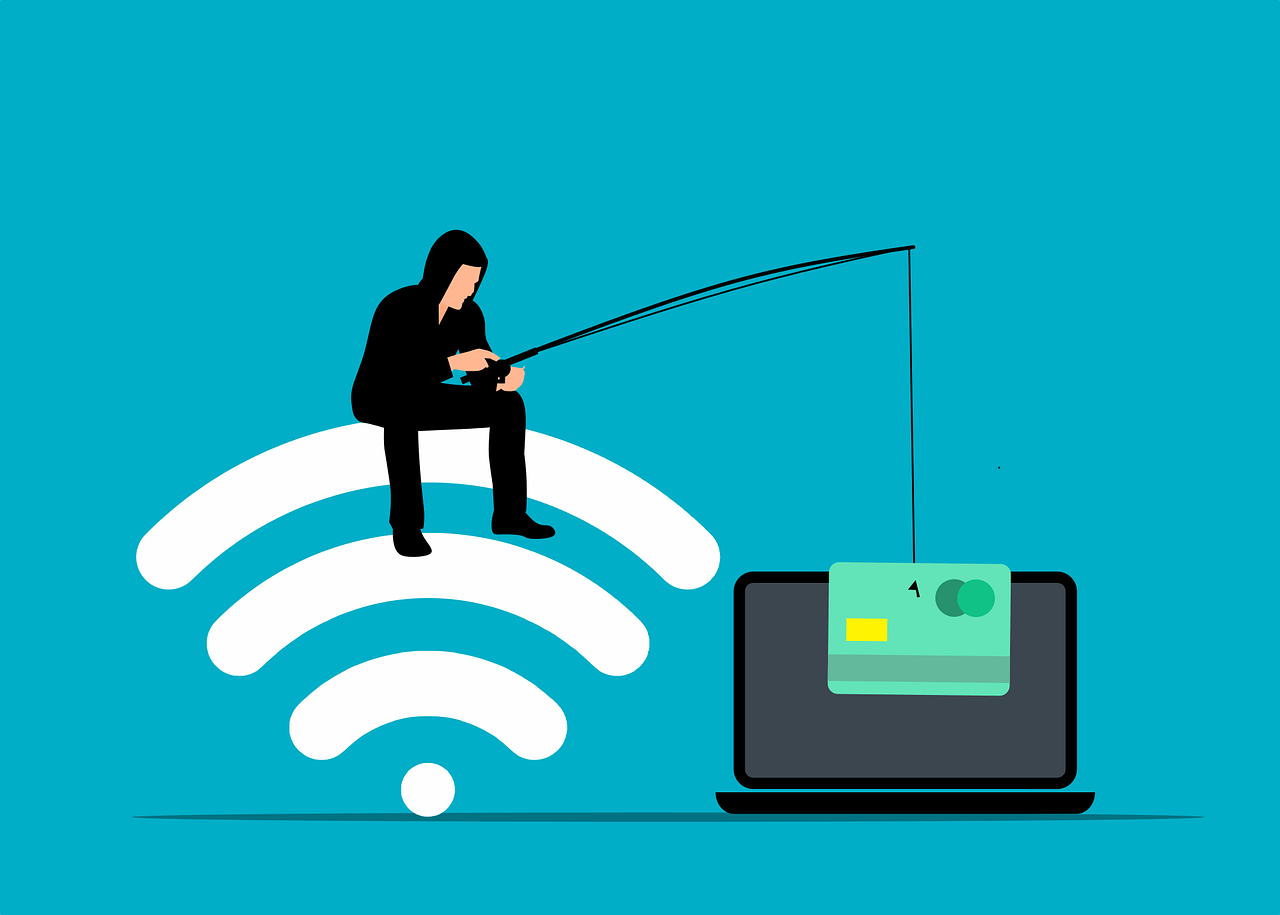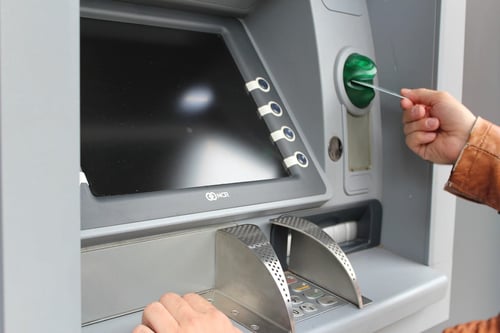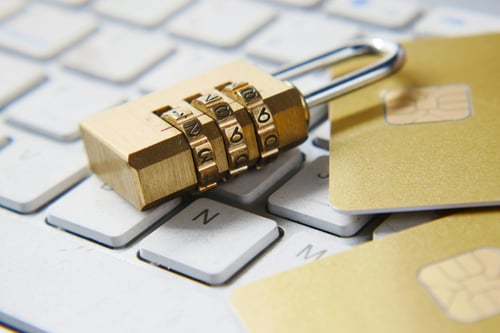The threat of identity theft continues to grow every day. As digital identities are becoming an integral part and valuable asset of modern life, they attract cybercriminals of all sorts. The more personal data circulates online, the greater the risk of falling victim to cybercrime.
The 2023 Norton Cyber Safety Insights Report highlights an alarming reality: In 2022, 47.5 million adults worldwide fell victim to identity theft; that's roughly one of every seven people. What is even more concerning is that 76% of those affected suffered financial losses.
These numbers illustrate that identity theft is not just a virtual risk, but poses a real threat for all of us. It is not without reason that, according to Statista, global spending on cybersecurity has gone up by about 50% each year recently.
The importance of protecting digital identities is growing; companies and private individuals alike need to act proactively to safeguard themselves against attacks. One key preventative measure can be the implementation of effective identity verification procedures. Read along as we explore what else can be done to prevent, detect and react to identity theft.
What is Identity Theft?
Identity theft is a widespread form of cybercrime; perpetrators illegally obtain an individual's personal data in order to fraudulently impersonate them. The end goal is often financial abuse or exploitation. Phishing, malware infections or data leaks are typical ways the data gets into the wrong hands in the first place.
The following is a typical scenario to illustrate the definition of identity theft: An attacker gains access to sensitive information such as names, bank details or credit card numbers. He then uses this stolen data to conduct unauthorized activities, such as applying for a credit card or signing a cell phone contract in someone else's name. This can result in considerable financial damage for the victim, as well as repercussions for the company the data was stolen from. It is often difficult to rectify the situation for all involved.
Identity theft can have serious implications for affected companies or organizations. Reputational damage, financial losses, legal proceedings, loss of trust among customers and partners are just some of the potential consequences. It usually requires considerable effort to restore the company's credibility. That's why it is crucial to prevent identity theft from happening in the first place.
Which Industries are at Risk?
There aren’t any so-called identity theft industries per se, but sectors such as financial services and healthcare are particularly vulnerable given the amount of sensitive personal data they have to manage. The following are just a few examples of what identity theft could look like across a variety of industries:
- Finance: Perpetrators use stolen identities to gain unauthorized access to bank accounts or credit cards.
- Insurance: Insurance claims are filed on behalf of the wrong person.
- Gambling: Stolen identities are used to circumvent age limits.
- Online Dating: Criminals create fake profiles to gain trust and obtain financial information from their victims.
- Mobility: Stolen identity data is used to book tickets or reserve rental vehicles.
- Healthcare: Personal data is exploited to obtain prescription drugs.
Types of Identity Theft
Identity theft can happen in many different ways, ranging from the simple exploitation of personal data to rather complex schemes of fraud.
- Financial Theft: This is the most common scenario. Criminals steal personal information such as social security numbers, credit card or banking credentials for financial gain.
- Social Security Identity Theft: Many countries utilize social security numbers as a form of ID. Identity theft that involves a stolen social security ID can have dire consequences and be particularly painful to sort out.
- Fake Profile: Cybercriminals create fake profiles or accounts to impersonate another person. These fake profiles are used on social media, dating platforms or other online services to collect personal information.
- Stolen ID Card: When physical identification documents such as ID cards are stolen, fraudsters can impersonate the victim and sign contracts, open bank accounts or apply for credit cards - provided that strict identity verification is not required.
- Online Shopping Scam: Identity thieves create new online shopping accounts in someone else's name and use them for fraudulent activities.
- Child Identity Theft: Since children typically have no credit reports or scores yet, their identity-related information can be used to open accounts that remain undetected for years.
- Synthetic Identity Theft: A survey among anti-fraud experts revealed that companies are particularly affected by advanced identity fraud. The survey results indicate that 46% of all respondents have experienced synthetic identity theft. It involves a combination of real identity data and fake data, such as a fake social security number with a real name and address.
How does Identity Theft Happen?
Identity thieves can use a variety of methods; there seems to be no limit to their creativity in developing new schemes.
- Phishing: Attackers use fake emails, text messages or websites to steal personal information such as passwords or credit card numbers from unsuspecting victims.
- Hacking: Hackers gain unauthorized access to computer systems or networks in order to obtain data illegally.
- Data Leaks: Sensitive data leaves an organization or company unintentionally or through malicious acts.
- Deepfakes: Deepfakes are fake photos or videos created with the help of artificial intelligence to imitate people and present them in fictitious situations.
- Skimming: Criminals install devices on ATMs or payment terminals to capture sensitive data from credit or debit cards.
How to Report Identity Theft
If you suspect identity theft, you need to act quickly:
- Check for Identity Theft: To detect identity theft, it is advisable to regularly review financial records and look for signs such as payment requests for orders you didn't place, letters from debt collection agencies or unfamiliar direct debits. Companies can use their internal security systems to quickly identify irregularities in employee or customer data.
- File a Police Report: If you suspect identity theft, it is important to contact the police immediately and file an identity theft report to document the incident and take legal action.
- Inform Respective Financial Institutions: It is crucial to inform the affected bank or credit card company as soon as possible about a potential data breach and to request the affected cards or accounts to be blocked to prevent further unauthorized transactions. Companies should also inform their financial partners if corporate accounts are affected.
- Change Passwords and PINs of Affected Accounts: In the event of identity theft, the passwords or PINs of all affected accounts such as online banking or email must be changed immediately. Companies should update all access data to internal systems and sensitive databases to avoid additional damage as well.
How to Prevent Identity Theft
Being proactive will be your best means of identity theft protection. There are multiple ways to stay one step ahead of fraudsters trying to attack you or your company.
Private individuals can do that by:
- Installing security software and system updates: Anti-virus and anti-malware programs protect against fraudulent software, while the latest operating systems close security loopholes.
- Using strong passwords: Passwords should be unique for each online account and consist of a combination of upper and lower case letters, numbers and special characters.
- Activating 2-Factor-Authentication (2FA): In addition to complex passwords, an additional confirmation method such as a code via text message, biometric authentication or additional authentication apps provides extra security.
- Reviewing bank statements regularly: Bank and credit card statements should be monitored for unauthorized transactions.
- Using caution when sharing personal data: Personal and sensitive data should only be shared on reputable websites that use a secure network.
Companies can take the following precautions:
- Verify identities: Carefully verify identities and ensure that people are who they say they are to combat fraudulent activity and identity misuse.
- Implement reliable security protocols: This includes data encryption, secure networks and frequent security audits.
- Restrict access authorization: Employees may only access data that is essential for their job description. This can be managed using authorization methods.
- Develop data protection policies: Data protection guidelines can help to ensure the proper handling of sensitive information.
- Counteract data protection violations: Establish a well-structured emergency plan that enables your company to respond quickly and correctly to security incidents.
- Get a comprehensive identity theft insurance plan: If despite your best efforts, the worst should happen and an incident of identity theft happens on your watch or through services you offer, your company will be held liable. Make sure you are covered for any financial losses that might involve.
PXL Vision Against Identity Theft
Protecting digital identities is more crucial than ever. Every organization - regardless of size or industry - has an obligation to know and protect their customers. PXL Vision provides innovative identity verification solutions that offer effective identity theft protection. Our approach is based on the well established "Know Your Customer" (KYC) principle, which was developed to counteract identity theft.
Precision and Reliability with AI Technology
Our digital identity verification solutions guarantee that the authenticity of any digital identity is verified accurately and reliably. The AI technology we use is superior to human verification of identity documents both in efficiency and accuracy, as it can verify an identity with minimal potential for error in a very short time.
Integrated Fraud Prevention
Fraud prevention is part of our AI-based biometric identification processes. With PXL Vision, you will actively shield your company against identity theft and counterfeiting, which will help you not only retain but build your company’s integrity.
Innovative Technological Development
We constantly update our solutions and systems to meet new technological challenges and stay abreast of them. Since the beginning of 2024, we have been actively developing a solution for deepfake detection. At the same time, we are working on a new fraud prevention network as a product. It utilizes the principle of swarm intelligence, which makes it possible for us to document and learn from fraud cases in collaboration with our customers and partners.
Conclusion
As more and more people use the internet both professionally and privately, the opportunities for cybercriminals to steal sensitive data continue to grow. At the same time, attackers' techniques are becoming ever more sophisticated. To protect against identity theft, companies need to be proactive and implement preventative security measures.
PXL Vision provides secure and effective solutions to prevent identity theft through automated identity verification processes. Would you like a personal consultation? Contact us to learn how you can lead your company into a secure future.
FAQ







